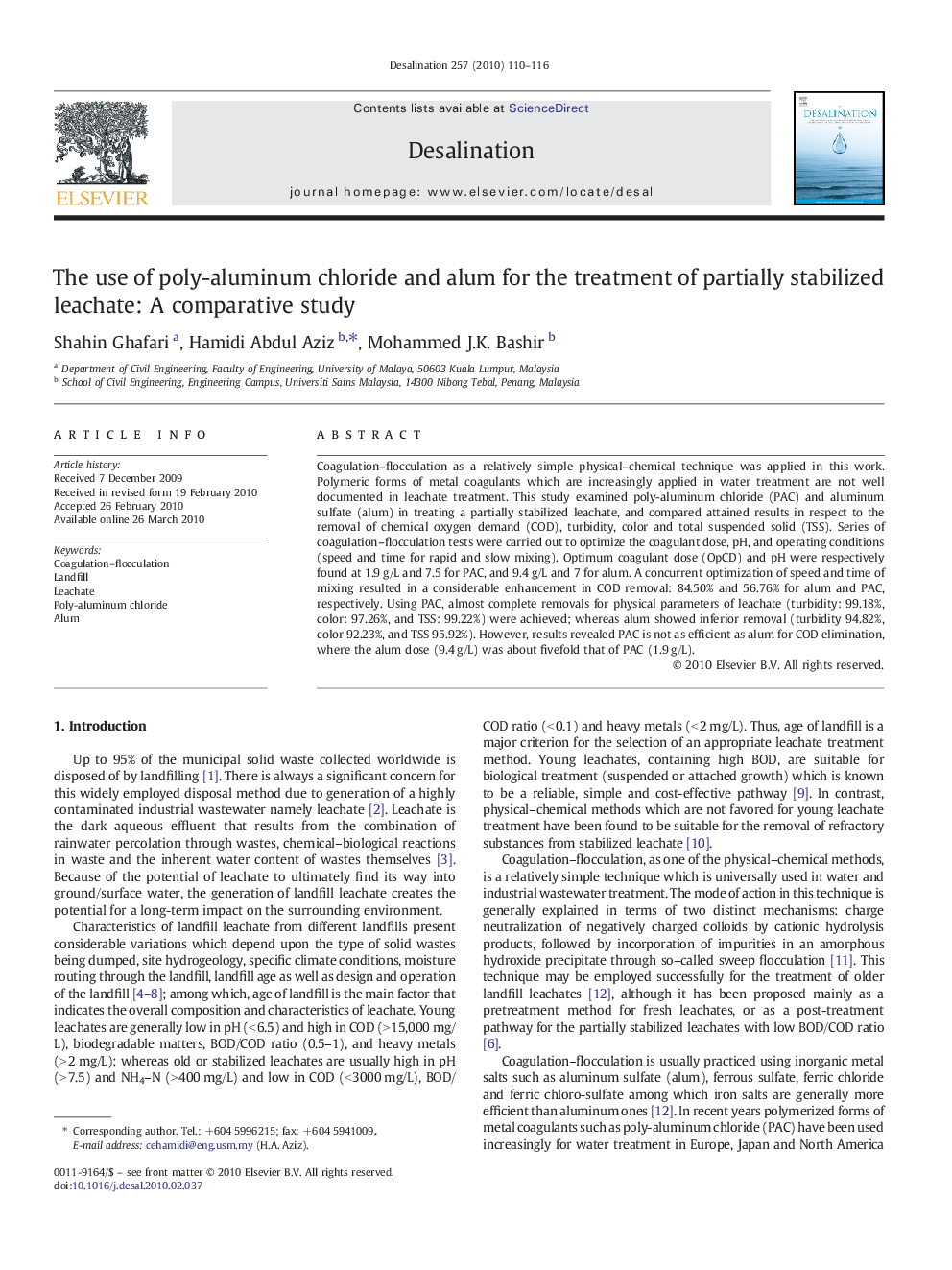| Article ID | Journal | Published Year | Pages | File Type |
|---|---|---|---|---|
| 625730 | Desalination | 2010 | 7 Pages |
Abstract
Coagulation-flocculation as a relatively simple physical-chemical technique was applied in this work. Polymeric forms of metal coagulants which are increasingly applied in water treatment are not well documented in leachate treatment. This study examined poly-aluminum chloride (PAC) and aluminum sulfate (alum) in treating a partially stabilized leachate, and compared attained results in respect to the removal of chemical oxygen demand (COD), turbidity, color and total suspended solid (TSS). Series of coagulation-flocculation tests were carried out to optimize the coagulant dose, pH, and operating conditions (speed and time for rapid and slow mixing). Optimum coagulant dose (OpCD) and pH were respectively found at 1.9Â g/L and 7.5 for PAC, and 9.4Â g/L and 7 for alum. A concurrent optimization of speed and time of mixing resulted in a considerable enhancement in COD removal: 84.50% and 56.76% for alum and PAC, respectively. Using PAC, almost complete removals for physical parameters of leachate (turbidity: 99.18%, color: 97.26%, and TSS: 99.22%) were achieved; whereas alum showed inferior removal (turbidity 94.82%, color 92.23%, and TSS 95.92%). However, results revealed PAC is not as efficient as alum for COD elimination, where the alum dose (9.4Â g/L) was about fivefold that of PAC (1.9Â g/L).
Related Topics
Physical Sciences and Engineering
Chemical Engineering
Filtration and Separation
Authors
Shahin Ghafari, Hamidi Abdul Aziz, Mohammed J.K. Bashir,
